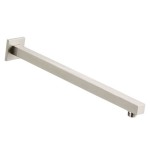How to Reupholster an Old Armchair: Essential Aspects
Reupholstering an old armchair can be a rewarding experience, transforming a beloved piece of furniture into a fresh and updated statement. However, to achieve a professional-looking result, it is crucial to consider several essential aspects of the process. These include the choice of fabric, proper measurements, and meticulous execution of upholstery techniques.
In this article, we will delve into each of these aspects, providing expert tips and guidance to help you successfully reupholster an old armchair. From selecting the perfect fabric to mastering the art of tacking and stapling, we'll cover everything you need to know. So, gather your tools, choose a beautiful fabric, and let's embark on this transformative journey.
Essential Aspects of Reupholstering an Old Armchair
1. Fabric Selection
The fabric you choose for your armchair will play a significant role in its aesthetics and durability. Consider the style of your furniture, the intended use of the armchair, and the colors and patterns of your existing décor. Upholstery fabrics range from luxurious velvets and silks to durable linens and cottons. Choose a fabric that complements your room's design while providing the comfort and wearability you need.
2. Measurements and Cutting
Precise measurements are essential for a well-fitting reupholstery job. Measure the width, height, and depth of each section of the armchair, including the seat, back, arms, and skirt. Add extra fabric for seams and overlaps, and mark the measurements clearly on the raw fabric before cutting. Careful cutting will ensure that the fabric fits snugly without any puckering or excess material.
3. Prepping the Armchair
Before applying the new fabric, it is crucial to prepare the armchair by removing the old upholstery. This involves taking off the existing fabric, padding, and tacks. Clean the frame to remove any debris or dust. If necessary, replace any worn or damaged parts of the frame or springs to ensure a sturdy foundation for the new upholstery.
4. Tacking and Stapling
Tacking and stapling the fabric requires precision and technique. Start by tacking the fabric to the frame along the edges, ensuring that it is evenly stretched and taut. Use a staple gun to secure the fabric firmly, spacing the staples evenly and sinking them just below the surface. Fold and tuck the excess fabric neatly, securing it with more tacks or staples for a clean and finished look.
5. Piping and Trims
Piping and trims can add a touch of elegance and detail to your reupholstered armchair. Cut the piping in the desired length and sew it around the edges of the fabric sections before attaching it to the frame. Trims, such as fringe or cord, can be applied to cover the seams or enhance the overall aesthetics. Secure them firmly using glue or tacks.
6. Finishing Touches
Once the fabric is in place and secured, add any final touches to complete the reupholstery. This may include adding decorative buttons or studs, attaching a new skirt, or cleaning and polishing any metal or wooden details. Pay attention to the overall appearance and ensure that all elements are cohesive and well-finished.
Reupholstering an old armchair is a rewarding and fulfilling project that can bring new life to a cherished piece of furniture. By carefully considering these essential aspects, you can achieve a professional-looking result that will enhance your home's décor and provide years of comfortable use.

How To Reupholster A Chair Step By

How To Reupholster A Chair Victorian Reinvented Delaware

Reupholstering An Antique Chair She Holds Dearly

How To Upholster A Wooden Arm Chair For The Upholstery Beginner

Reupholstering An Antique Chair She Holds Dearly
How To Reupholster A Chair Step By

How To Reupholster A Chair Makeovers Inspire You

How To Reupholster A Wing Back Chair By Confessions Of Refashionista

How To Reupholster A Chair Victorian Reinvented Delaware

How To Reupholster Chairs A Simple Step By Guide








